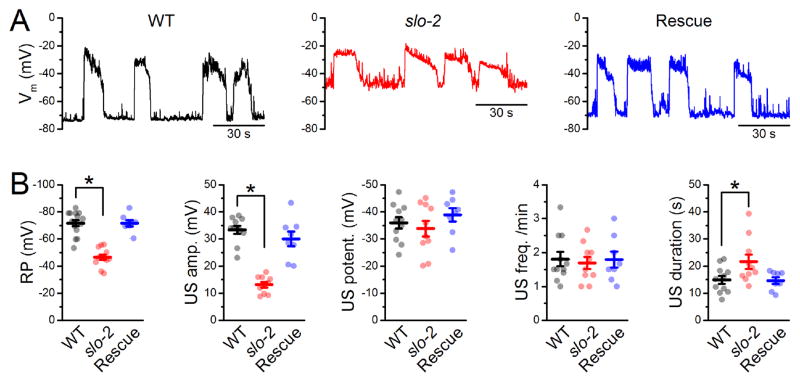Figure 2.
Loss-of-function mutation of slo-2 reduced the amplitude of a spontaneous up-state in motor neurons. A. Samples traces of spontaneous membrane voltage changes of VA5 from wild type (WT), slo-2(nf101), and slo-2(nf101) rescued by expressing wild-type SLO-2b under the control of Prab-3. B. Comparisons of the resting membrane potential (RP), and up-state (US) frequency, duration, amplitude, and potential. Both the averaged value of each experiment (filled circle) and the mean ± SE of the group (line and bar) are shown. The asterisk (*) indicates a statistically significant difference compared with WT (p < 0.05, one-way ANOVA with Tukey’s post hoc tests). The sample size (n) was 15 for WT, 12 for slo-2, and 8 for Rescue. Samples without obvious up-states (4 WT and 2 slo-2 mutant) were not included in the up-state quantifications. The recordings were performed with extracellular solution I and pipette solution I.

